Black thumb? Perfect. These plants don’t care. They don’t need your perfect pruning, your fancy soil mix, or your constant attention. They just want a little dirt, a bit of sunlight, and the freedom to show off. These are the perennials for people who forget to water, plant things upside down, or have given up after three dead houseplants and a cactus that quit. No lectures. No guilt. Just plants that do their thing—year after year—without needing you to be some kind of gardening wizard. Ready to meet the green warriors that thrive on pure stubbornness? Let’s dig in. (Figuratively.)
Daylily
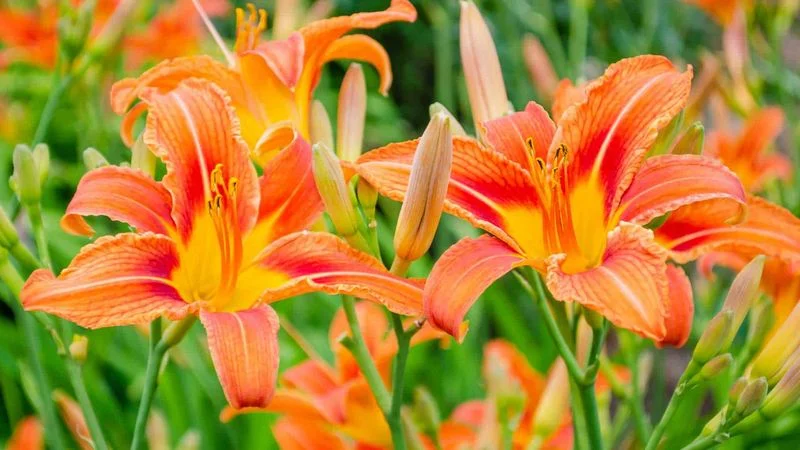
The daylily is a gardener’s dream with its resilience and vibrant flowers. Originating in Asia, these perennials offer a splash of color in various shades. Questioning its toughness? Daylilies can thrive in different soil types and climates, making them perfect for beginners.
Each bloom lasts just a day, but the plant keeps producing more throughout the summer. Its roots are deeply embedded in folklore, known as a symbol of devotion. This hardy plant is also low-maintenance, only requiring occasional watering and deadheading. Their ability to multiply swiftly makes them a favorite among gardeners.
Hosta
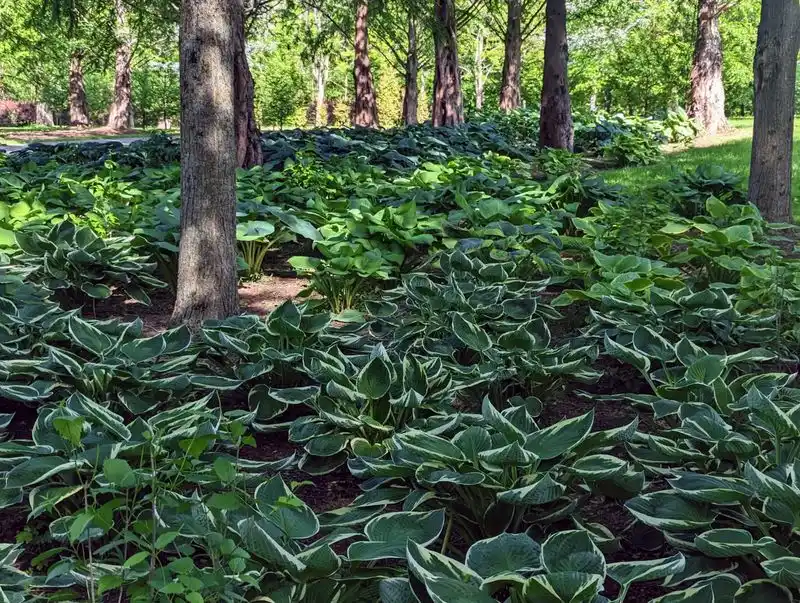
Hostas are beloved for their lush foliage and ability to thrive in shady spots. With origins tracing back to Japan, these plants are a staple in many gardens. Their large, textured leaves come in various shades of green, with some boasting white or yellow edges.
Hostas are exceptionally resilient, tolerating a range of conditions. They require little more than some shade and periodic watering. Surprisingly, they can also withstand cold winters and bounce back in spring. Hostas offer a serene presence, creating a calming atmosphere in any garden they inhabit.
Coneflower
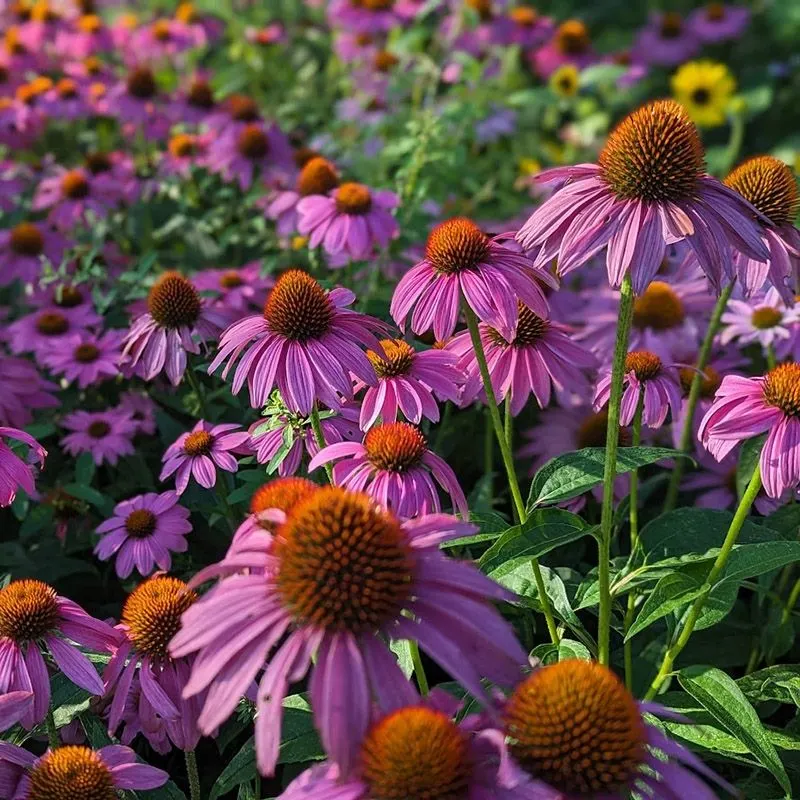
Coneflowers, or Echinacea, are known for their distinctive shape and vibrant color. These North American natives are not only beautiful but also attract butterflies and bees, enhancing any garden’s ecosystem. Their daisy-like petals are a striking addition to garden beds.
Coneflowers are drought-tolerant and can thrive in various soil types. They bloom from midsummer to fall, providing prolonged color. Besides their beauty, coneflowers have medicinal properties, historically used by Native Americans. Their robust nature and minimal care requirements make them a top choice for novice gardeners.
Black-eyed Susan
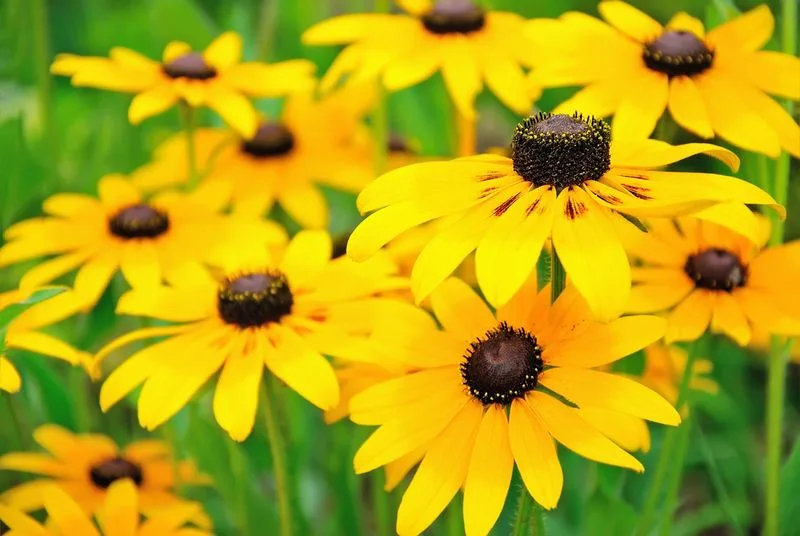
Black-eyed Susans are a ray of sunshine in any garden, known for their cheerful yellow blooms with dark centers. Native to North America, these flowers symbolize encouragement and justice. They are incredibly hardy, thriving in a range of climates and soils.
Once established, they require minimal care, making them ideal for those new to gardening. Black-eyed Susans bloom from summer to early fall. Their presence not only adds brightness but also attracts pollinators like bees and butterflies. These resilient perennials are a testament to nature’s enduring beauty.
Peony
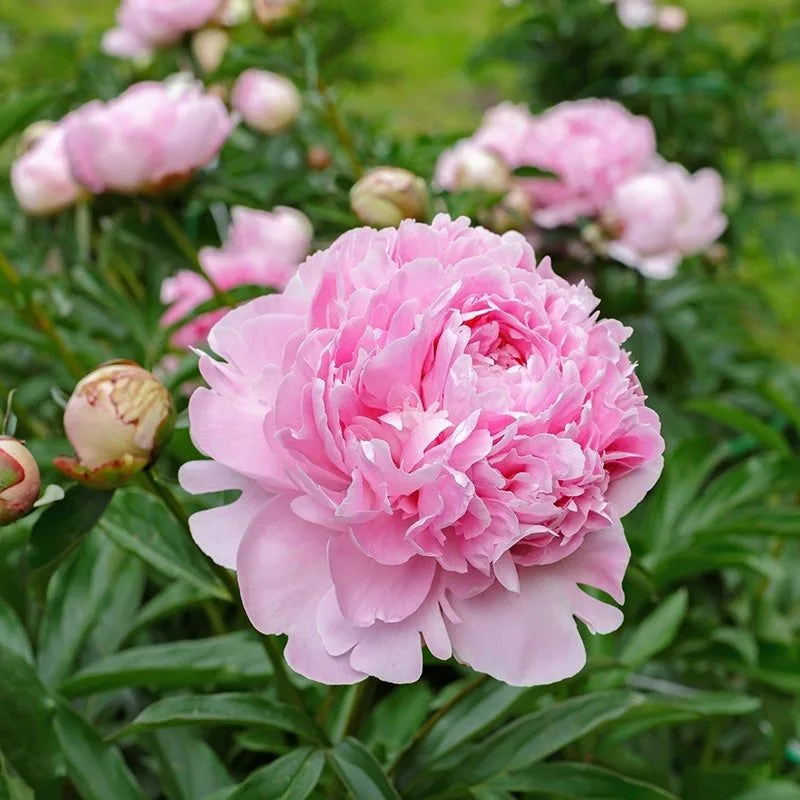
Peonies are synonymous with elegance, boasting large, fragrant blooms. Originating from Asia, they have graced gardens for centuries. Their exquisite flowers come in various colors, from soft pinks to deep reds.
Peonies are surprisingly easy to grow, requiring just well-drained soil and plenty of sunlight. They can live for decades, often outliving their gardeners. Peonies bloom in late spring, and their lush foliage provides beauty even after the flowers have faded. These perennials offer a touch of vintage charm, reminiscent of classic garden landscapes.
Lavender
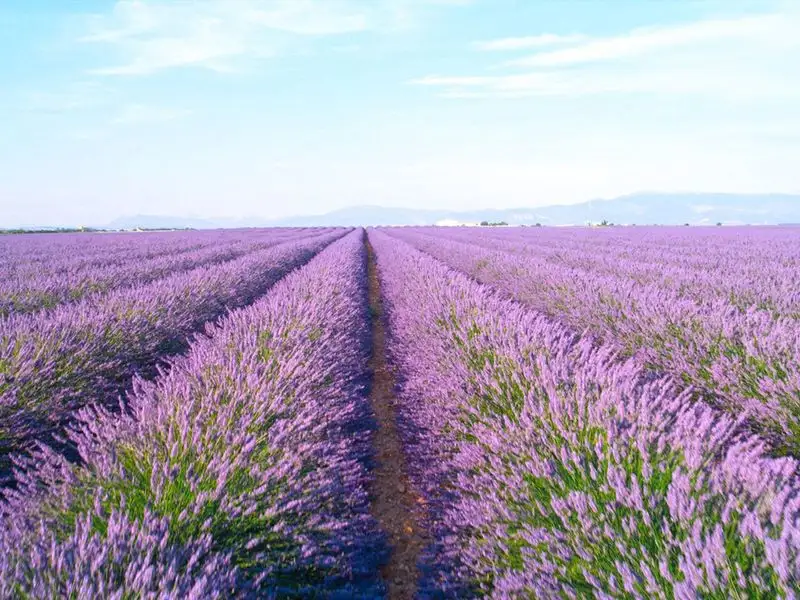
Lavender is cherished for its soothing fragrance and striking purple flowers. Originally from the Mediterranean, this herb has become a garden staple. Its silvery foliage and vibrant spikes of flowers create a beautiful contrast.
Lavender thrives in sunny locations with well-drained soil and requires minimal watering. Its drought-resistant nature makes it perfect for low-maintenance gardening. Beyond its beauty, lavender has culinary and therapeutic uses, offering a sensory delight. The calming scent and visual appeal make lavender a beloved choice for gardeners seeking tranquility.
Sedum
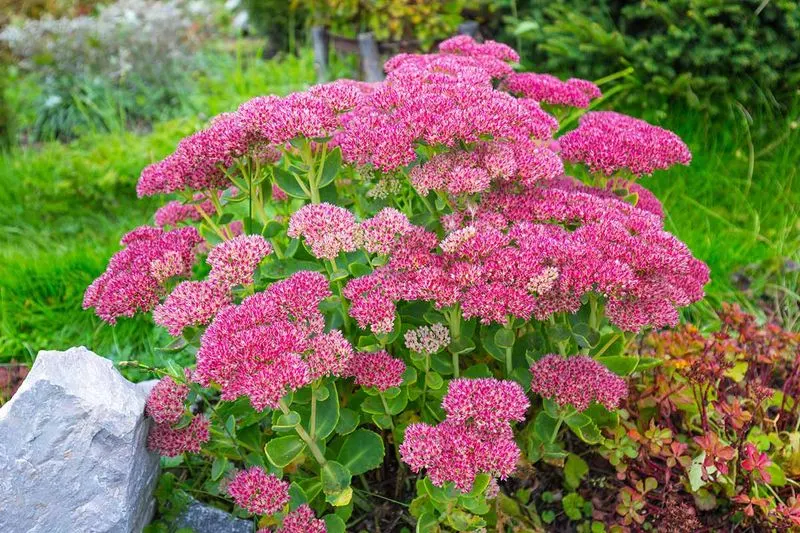
Sedum, often called stonecrop, is a succulent that thrives where other plants may struggle. Its thick leaves store water, helping it endure drought conditions. Sedum comes in various forms, from groundcovers to upright varieties with stunning blooms.
These plants are incredibly easy to grow, requiring minimal soil and maintenance. Sedums flower in late summer and fall, offering a lasting display of color. Their ability to attract pollinators adds ecological value to gardens. Known for their hardiness, sedums are perfect for rock gardens or dry patches.
Bee Balm

Bee balm, or Monarda, is a favorite among pollinators, known for its vibrant flowers and aromatic leaves. Native to North America, bee balm flourishes in sunny spots with well-drained soil. Its tubular flowers come in red, pink, and purple, adding a splash of color to gardens.
This plant requires regular watering but is otherwise low-maintenance. Bee balm is also valued for its medicinal properties, having been used by Native Americans for centuries. Its ability to attract bees, butterflies, and hummingbirds makes it a lively addition to any garden.
Yarrow
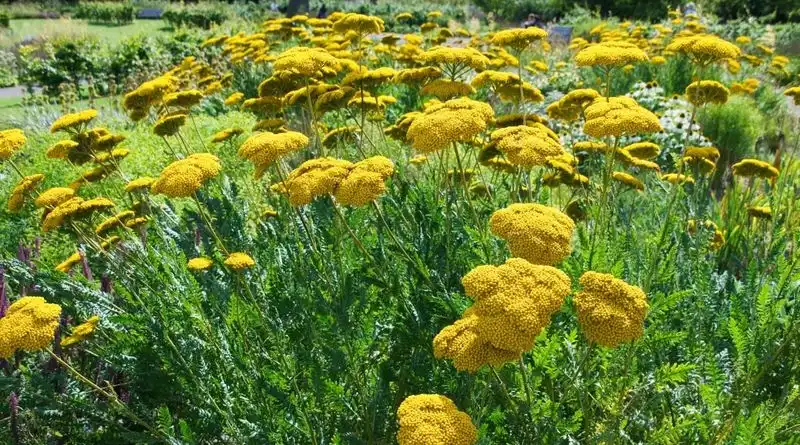
Yarrow is a versatile perennial known for its feathery foliage and clusters of small flowers. Its origins trace back to Europe and Asia, where it was used medicinally for its healing properties. Yarrow’s flowers come in various colors, including yellow, pink, and white.
This hardy plant thrives in sunny, dry conditions and requires minimal watering once established. Its ability to withstand poor soil makes it a favorite in wildflower gardens and meadows. Yarrow’s blooms attract beneficial insects, enhancing garden biodiversity. Its resilience and beauty make it a gardener’s ally.
Ferns

Ferns, with their ancient lineage, bring a touch of timeless elegance to gardens. These shade-loving plants have survived for millions of years, adapting to various environments. Their intricate fronds create a lush, tropical feel.
Ferns thrive in moist, shaded areas, requiring little more than occasional watering. They are perfect for adding depth and texture to garden beds. With numerous varieties to choose from, ferns offer versatility and are often used as groundcovers or accent plants. Their ability to create a serene atmosphere makes them a favorite.
Russian Sage

Russian sage is celebrated for its aromatic foliage and tall spires of lavender-blue flowers. Originating from Central Asia, it thrives in sunny, well-drained locations. This drought-tolerant perennial is perfect for borders and rock gardens, offering a striking visual display.
Russian sage requires minimal care, needing only occasional pruning to maintain its shape. Its resilience makes it a popular choice for xeriscaping. As the flowers sway in the summer breeze, they attract bees and butterflies, adding life to gardens. The plant’s silvery leaves provide a contrast to vibrant blooms.
Catmint
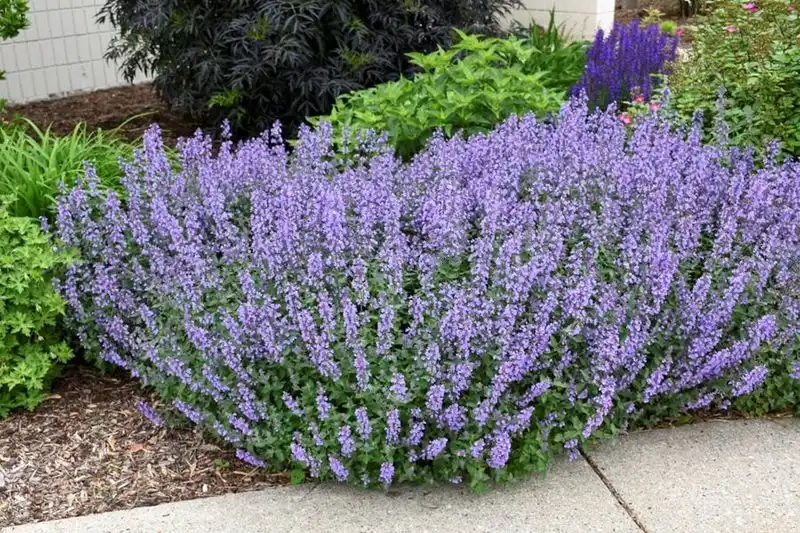
Catmint, with its soft lavender-blue flowers and aromatic foliage, is a magnet for pollinators. This perennial is easy to grow, thriving in sunny spots with well-drained soil. Its origins can be traced back to Europe and Asia, where it was used for its calming properties.
Catmint blooms from late spring to early fall, offering continuous color. It requires little more than occasional watering and pruning. The plant’s cascading habit makes it ideal for borders or containers. Beyond its beauty, catmint’s appeal lies in its ability to attract bees and butterflies.
Astilbe
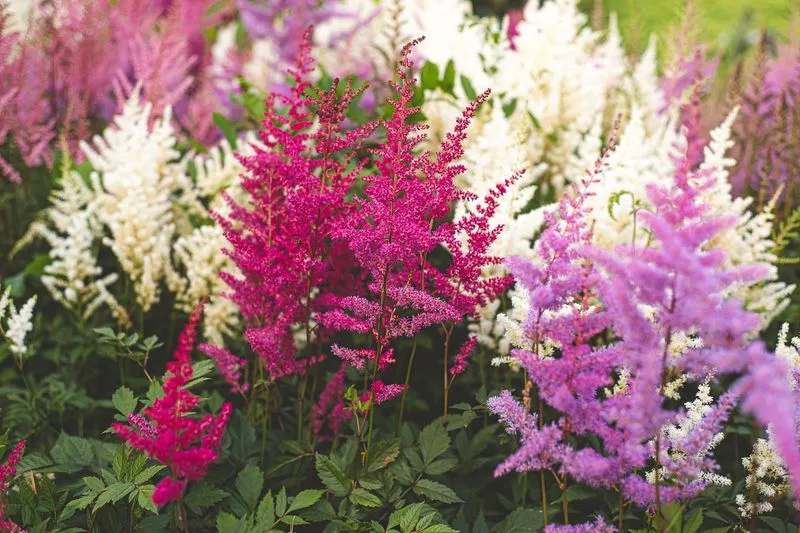
Astilbe is known for its feathery plumes of flowers and fern-like foliage, adding elegance to shaded gardens. Originating from Asia, these perennials thrive in moist, rich soil. Astilbes come in various colors, including white, pink, and red, brightening any garden nook.
They are relatively low-maintenance, requiring regular watering to keep their soil damp. Astilbes bloom in early to mid-summer, offering a long-lasting display. Their ability to thrive in shade while providing vibrant color makes them a gardener’s favorite. Astilbes are perfect for creating a lush, romantic garden setting.
Coral Bells
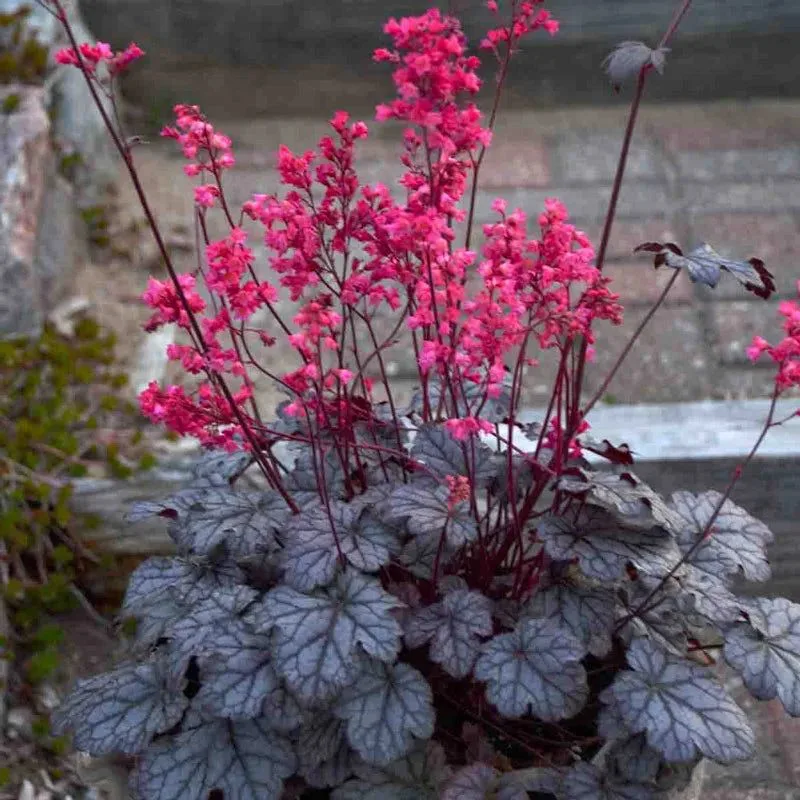
Coral bells, or Heuchera, offer a unique combination of colorful foliage and delicate blooms. Native to North America, these perennials are versatile and easy to grow. Their leaves come in a range of colors, from deep purple to bright green, often with variegated patterns.
Coral bells thrive in partial shade and well-drained soil. They require minimal care, needing only occasional watering and dividing every few years. The plant’s bell-shaped flowers bloom in late spring, attracting hummingbirds. Coral bells add a splash of color and texture to garden borders and containers.
Creeping Thyme
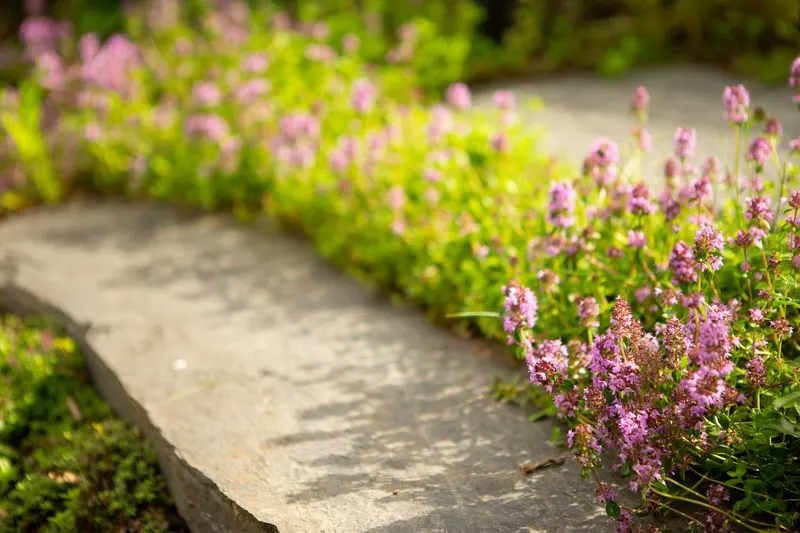
Creeping thyme is a versatile groundcover, known for its fragrant foliage and tiny purple flowers. Originally from the Mediterranean, it thrives in sunny, well-drained locations. This perennial is perfect for rock gardens and between stepping stones, offering a lush carpet of greenery.
Creeping thyme requires minimal care, needing only occasional watering once established. Its drought-resistant nature makes it ideal for low-maintenance gardens. Beyond its beauty, thyme is also a culinary herb, adding flavor to dishes. The plant’s ability to attract pollinators enhances its garden appeal.
Liriope
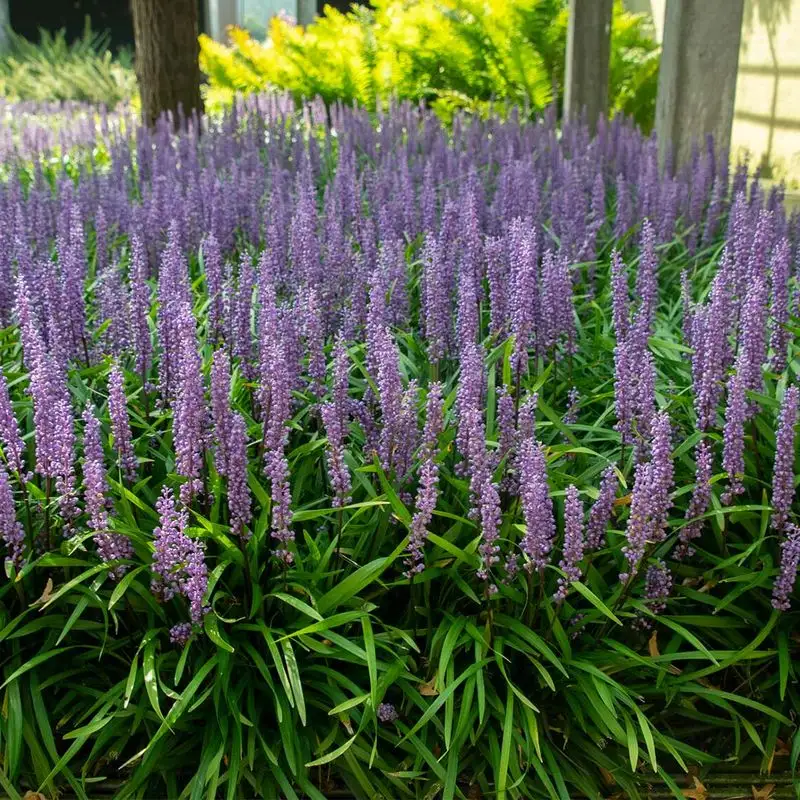
Liriope, often called lilyturf, is a hardy perennial known for its grass-like appearance and vibrant flower spikes. Native to East Asia, it thrives in a variety of conditions, from full sun to deep shade. Liriope’s resilience makes it a popular choice for borders and groundcovers.
This plant requires minimal maintenance, needing only occasional watering and trimming. Liriope blooms in late summer, offering a burst of purple flowers. Its ability to prevent soil erosion adds practical value to its ornamental appeal. Liriope’s adaptability and beauty make it a garden staple.
Hellebore
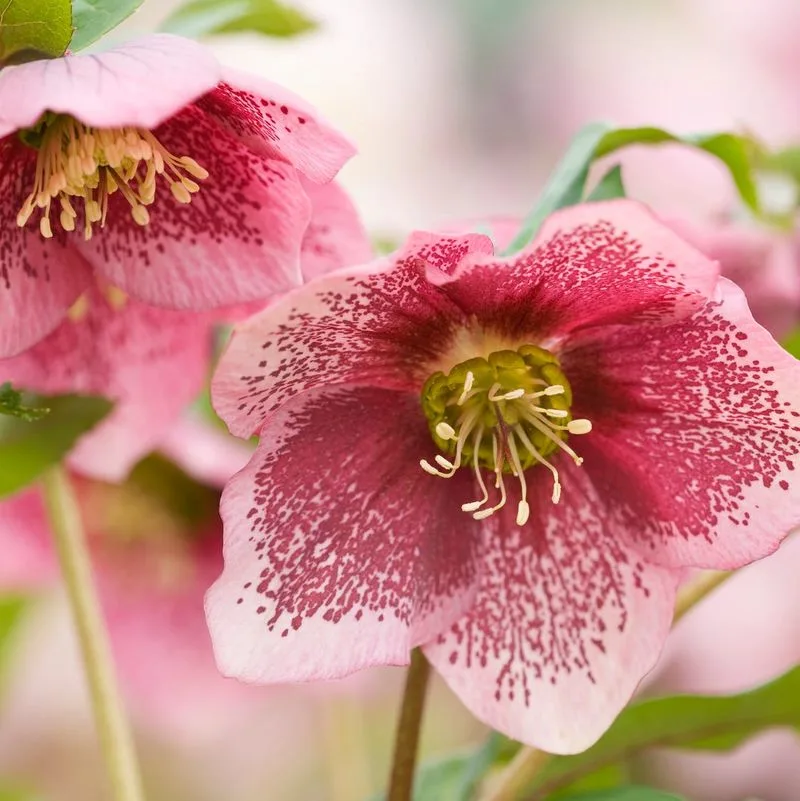
Hellebores, often called Lenten roses, are cherished for their early spring blooms. Native to Europe, these perennials offer a range of colors, from white to deep purple. Hellebores thrive in shaded areas with rich, well-drained soil.
These plants require little care, needing only occasional watering and mulching. Their ability to bloom in late winter or early spring makes them a delightful surprise in garden beds. Hellebores’ long-lasting flowers and evergreen foliage provide year-round interest. Their unique charm and hardiness make them a gardener’s delight.
Lamb’s Ear
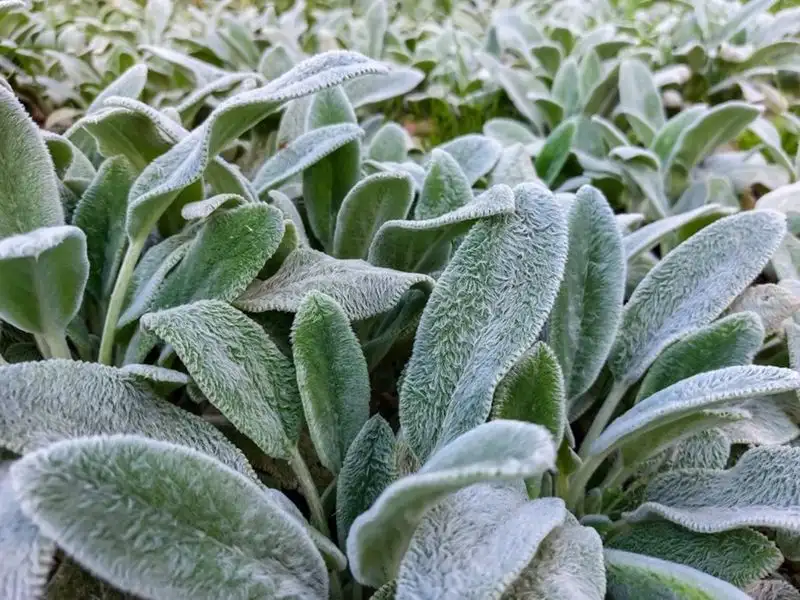
Lamb’s ear, with its soft, woolly leaves, adds a tactile element to gardens. Native to Turkey and Iran, this perennial is valued for its silvery foliage and ability to thrive in sunny, dry conditions. Lamb’s ear forms a dense groundcover, perfect for borders and edging.
This plant requires minimal care, needing only well-drained soil and occasional watering. Its drought-tolerant nature makes it ideal for rock gardens. While lamb’s ear rarely flowers, its leaves’ unique texture and color offer visual interest. The plant’s resilience and softness make it a favorite among gardeners.
Chrysanthemum
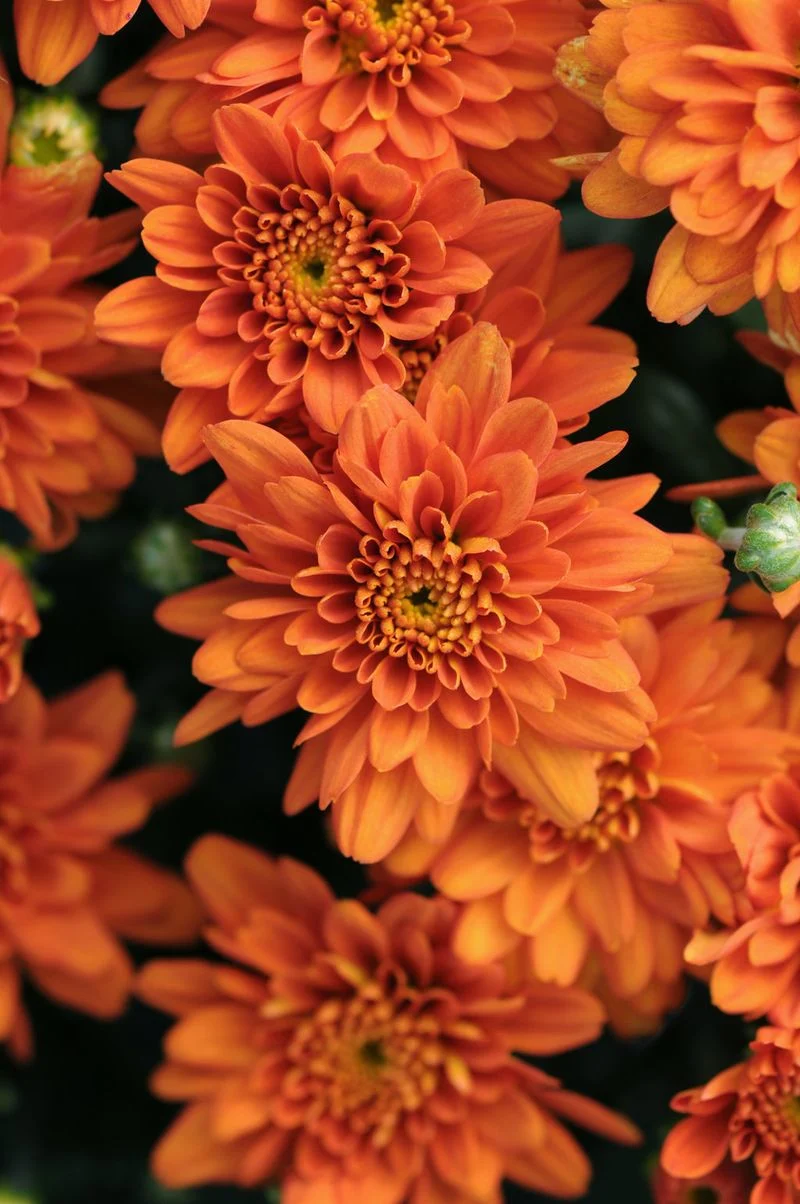
Chrysanthemums, or mums, brighten gardens with their vibrant autumn blooms. Originally from China, these perennials come in various shapes and colors, from fiery reds to sunny yellows. Chrysanthemums symbolize optimism and joy, adding a festive touch to gardens.
These plants thrive in sunny spots with well-drained soil and require regular watering. Mums bloom in late summer to fall, offering a colorful finale to the garden season. Their ability to withstand cooler temperatures extends garden enjoyment into autumn. Chrysanthemums’ cheerful presence and easy care make them a gardener’s joy.

